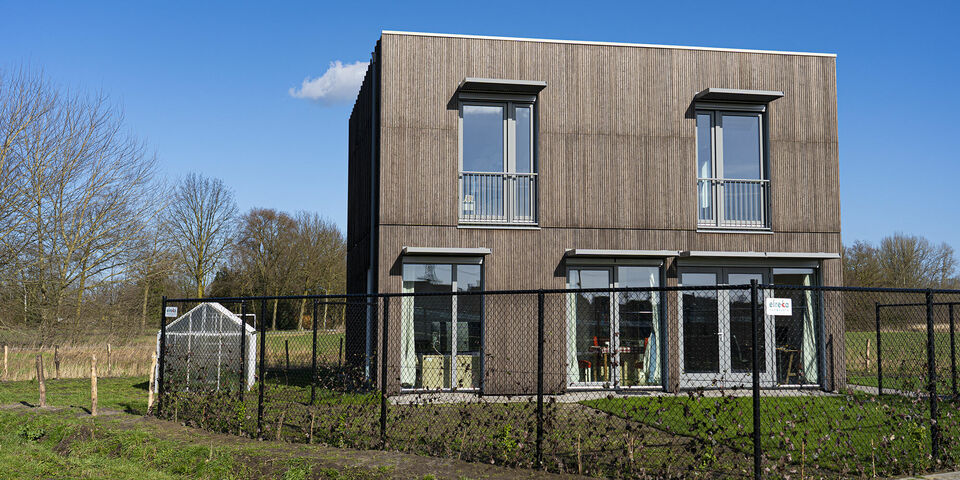Antoine Post is living in ‘his’ CASA 1.0: “Everything works”
Antoine Post, manager of Team CASA, has been living in his ‘self-designed’ sustainable home with his girlfriend for four months now. Construction company Hurks completed the student team’s home some time ago already, in October. After months of finetuning, adjusting and testing things, everything seems to be working properly. Time to present the home to the general public. Cursor paid a visit.
To Antoine Post, who has graduated by now, CASA 1.0 ‘simply’ feels like home these days. He rents the ground floor from housing corporation Woonbedrijf. It’s only after he opens the door to the service core that he starts to realize that he designed the building together with his fellow team members. And that core is precisely what makes the building so special, Post explains. “That’s were all the systems, which are completely attuned to one another to make the home work as efficiently as possible, come together.”
These systems primarily concern themselves with cooling and heating the home. CASA 1.0 has a fully autonomous climate system composed of solar panels, a heat pump and an enormous underground water tank. During the summer, the system stores heat with which it cools the home. Similarly, it uses that heat to keep the home warm during the winter months.
Water tank
Solar panels on the roof provide the heat pump with energy and heat. The pump then transfers the heat to the underground tank of 104 cubic meters filled with water where it is stored. As soon as it becomes necessary to heat the building, the collected heat is transferred to the floor heating. It takes very little energy to power the small pump that transfers it. This way, CASA 1.0 doesn’t need any power from the regular electricity grid for its climate control system. The home’s lighting and a phone charger are also connected to the solar panels.
The only thing the residents need to do is set the thermostat, as you would do in a normal home. That was an important aim of this project, Post says. “The home had to be comfortable to live in, residents really shouldn’t be aware at all of the technology in that service core.” Future residents of the upper floor therefore aren’t required to understand how the system works.
First resident
However, it’s important that Post does understand how the system works. “When we moved in on October 1, we couldn’t turn on the heat with the thermostat, everything had to be done manually. Everything had been tied together physically, but much still needed to be set.” He managed to do so together with team member Pau Brossa Rodriguez, and now the system can function almost autonomously.
The climate system isn’t the home’s only special feature. It also includes a heat pump for tap water, a system that flushes the toilets with rain water, and the designers have done away with light switches. “All that remains is the energy use of the oven, hot plate and sockets. We aren’t allowed to connect those to our system since every home is required to have an electricity meter and supplier. That’s too bad, because that makes it impossible to operate fully independent of the regular grid. But being able to provide the largest consumer, by which I mean the heating of the home, with energy yourself is a major step in itself.”
Even though CASA 1.0 as a project is essentially completed, the work doesn’t stop for Post. He and his colleague Brossa Rodriguez launched the company Integer Technologies, with which they intend to further develop their home into a CASA 2.0. But even with version 1.0, Post will remain busy for some time. “There’s still much we can continue to improve, and we can make the system more efficient. You could compare it to a Tesla: they install software updates. We at CASA can do that too.”



Discussion